Virginia is a state in the Southeastern region of the United States. It is situated between the Appalachian Mountains and the Atlantic Coast. As of 2020, Virginia has a population of over 8.65 million people. The climate and entire geography can be linked to the Blue Ridge Mountains and the Chesapeake Bay, which serve as home to numerous animals.
There is a wide percentage of forests as it is believed that over 70% of the lands of Virginia contain hardwood trees like oaks, mosses, hickories, and hemlocks. The forests are also known to contain white-tailed deers and other forest animals. While the forests of Virginia continue to flourish, here are 6 extinct animals that used to live in the Commonwealth of Virginia.

1. American Mastodon

The American mastodon had a long tail and a less hairy body surface.
©Sergiodlarosa / CC BY-SA 3.0 – License
| American Mastodon | |
|---|---|
| Kingdom | Animalia |
| Phylum | Chordata |
| Class | Mammalia |
| Order | Proboscidea |
| Family | Mammutidae |
| Genus | Mammut |
| Type Species | Elephas americanum |
The American mastodon has similarities with the mammoth. It is one of the extinct animals in North and Central America during the late Miocene or late Pliocene era. They lived in herds and lived mainly in Virginia’s thick forests. Unlike the woolly mammoth, which they are always compared to, the American mastodon had a more complex diet as it varied every season and depended on available resources.
They had a long tail and a less hairy body surface, and their tusks could extend to as large as 16 feet (5 m) and curve upwards. The American mastodon loves the cold spruce woodlands and has been extinct since 11,000 years ago. They disappeared from the lands of North America due to the adverse climatic change that limited their activity, causing them to retreat and finally decline. Also, their overexploitation by the Paleo-Indians led to their extinction.
2. Nautiloid
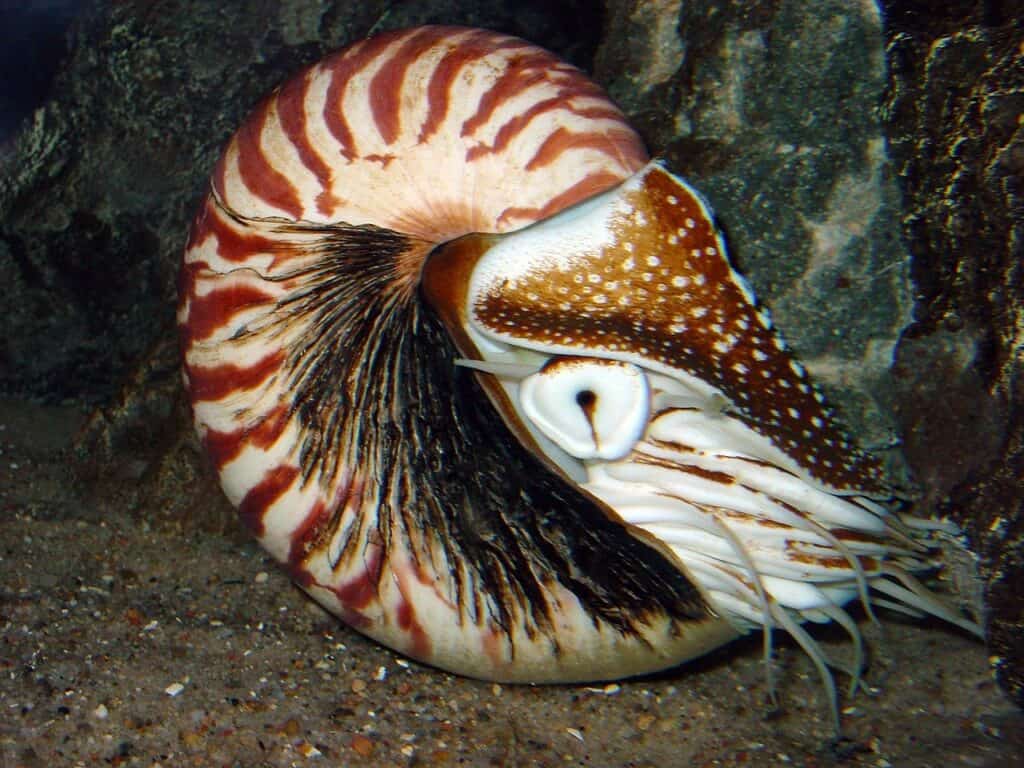
Nautiloids are also referred to as cephalopods.
©J. Baecker / public domain – License
| Nautiloid | |
|---|---|
| Kingdom | Animalia |
| Phylum | Mollusca |
| Class | Cephalopoda |
| Subclass | Nautiloidea |
| Extinct since | 205 million years ago |
Nautiloids are also referred to as cephalopods, together with squids, octopuses, and a few other animals. Like cephalopods, nautiloids originated in the Ordovician and Silurian Periods and began to decline steadily in the Devonian era. The Triassic era also witnessed nautiloids’ massive decline until the Miocene Epoch.
Ordovician nautiloids had a shell in which the animal lived; this shell was a result of the bodily secretions of the animal. As they grew older, they began to secret more bodily fluids to accommodate their new size by building larger shells. Unlike today, the extinct nautiloids had no twisted shapes and were long and straight.
3. Archimedes
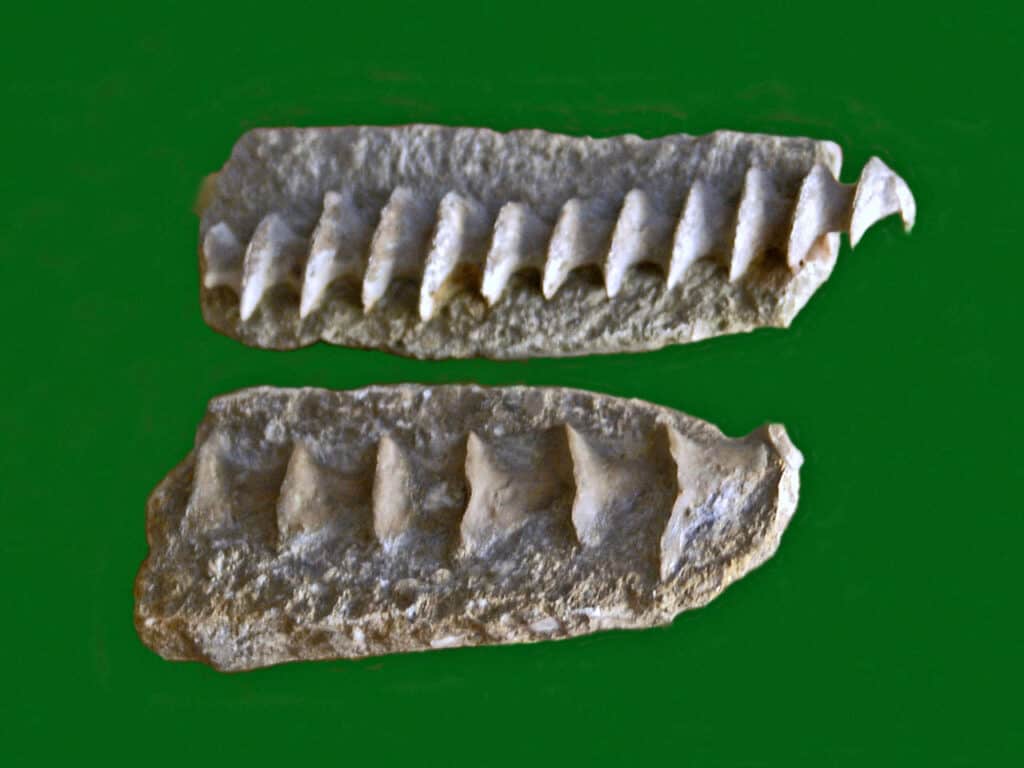
Archimedes is a species of bryozoa.
©Hectonichus / CC BY-SA 3.0 – License
| Archimedes | |
|---|---|
| Kingdom | Animalia |
| Phylum | Bryozoa |
| Class | Stenolaemata |
| Order | Fenestrida |
| Family | Fenestellidae |
| Species | Archimedes wortheni |
| Living Period | 345.3 to 268.0 million years ago |
Archimedes is a species of bryozoa named because of its corkscrew shape. The name was derived from the Archimedes screw, a type of water pump that propelled water ships and had a similar design to the Archimedes.
Bryozoa is an umbrella of simple, aquatic invertebrate animals that are so small that they are only 19.6 inches long. Unlike most animals with a well-defined buccal cavity, bryozoans use a special feeding organ called the lophophore. The lophophore contains numerous tentacles that eat via filter feeding. Since bryozoa live in marine water bodies like tropical waters and the ocean, they feed by driving food particles into the water.
Bryozoans live in colonies and may sometimes live in solitary. They have unique organs that perform distinct functions. Most bryozoan colonies have autozooids that are responsible for feeding, excretion, and other basic activities. Some bryozoa have a mineralized outer shell and form single-layered sheets that overlap on their body surfaces.
Experts believe that the phylum bryozoa was unable to survive evolution and hence, died off.
4. Dinosaurs
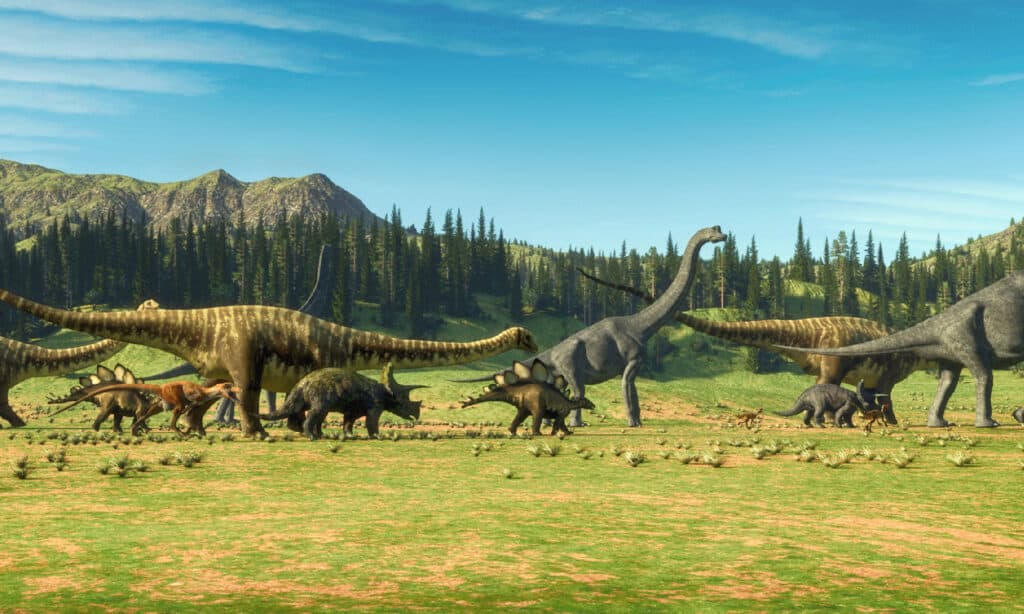
Dinosaurs became extinct 243 million years ago.
©iStock.com/Orla
| Dinosaurs | |
|---|---|
| Kingdom | Animalia |
| Phylum | Chordata |
| Clade | Dracohors |
| Clade | Dinosauria |
| Extinct since | 66 million years ago |
Virginia housed different species of dinosaurs, which appeared on the soils during the Triassic period between 251 and 201 million years ago. Virginia’s lands once held many fossils of both land and air dinosaurs that evolved from the earlier theropods.
There are also fossil records of dinosaurs that were once not regarded as dinosaurs because dinosaurs were known to be sluggish and cold-blooded, and those unidentified species were not. There is also a large collection of herbivores and carnivores, avians and non-avians, and other active animals with similar metabolisms, habitat adaptation, and social interaction as dinosaurs, living alongside the animal species in Virginia.
5. Coelacanth
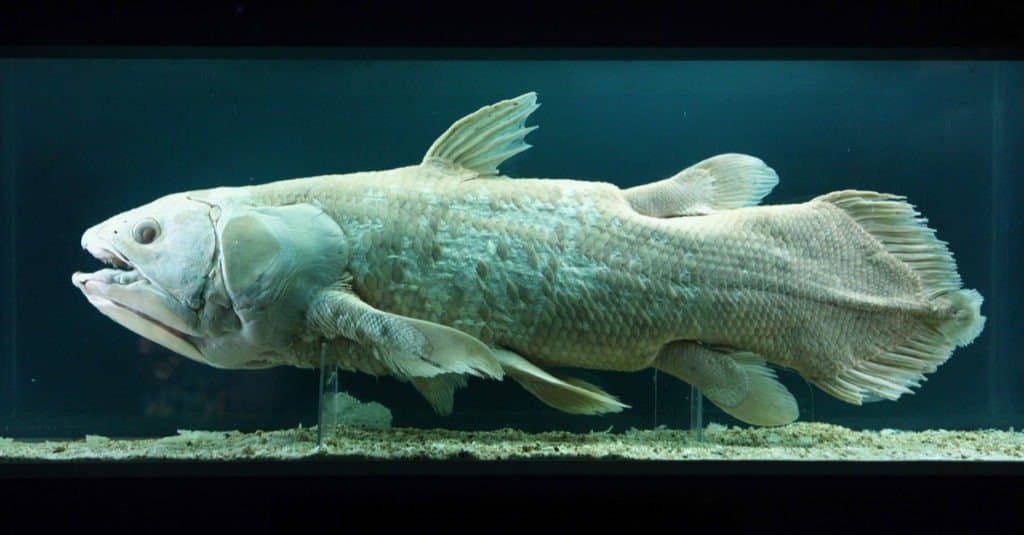
Coelacanths are fish species that were primarily found in the West Indian Ocean.
©Vladimir Wrangel/Shutterstock.com
| Coelacanth | |
|---|---|
| Kingdom | Animalia |
| Phylum | Chordata |
| Class | Sarcopterygii |
| Order | Actinistia |
| Family | Latimeriidae |
| Species | Coelacanthus granulatus |
| Extinct since | Around 66 million years ago |
Coelacanths are fish species that were primarily found in the West Indian Ocean. They are the oldest species of tetrapod fish and are closely related to lungfish and aquatic tetrapods like frogs. They are large and plump, can be as long as 6.5 ft, and weigh as much as 200 lbs. Based on their scales, they are expected to live as long as a century, and it is also noteworthy to know that they are nocturnal piscivorous drift-hunters.
Like other fish, the bodies of coelacanths are covered with scales that also serve as protection. They have eight fins and an equally proportionate tail. Coelacanth’s eyes are quite large and conditioned to see in poor light; they have a small mouth filled with pseudomaxillary folds.
Many people believe that humans played a role in the extinction of the Coelacanths.
6. Rutiodon
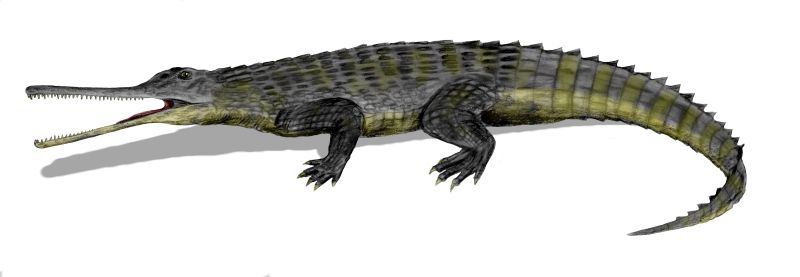
Rutiodon is an extinct animal belonging to the genus Phytosaur and the family Parasuchidae.
©Nobu Tamura (http://spinops.blogspot.com) / CC BY-SA 3.0 – License
| Rutiodon | |
|---|---|
| Kingdom | Animalia |
| Phylum | Chordata |
| Class | Reptilia |
| Order | Phytosauria |
| Family | Parasuchidae |
| Genus | Rutiodon |
| Extinct since | Late Triassic period 208.5 million years ago |
Rutiodons are popularly known as ‘wrinkle tooth.’ Rutiodon is an extinct animal belonging to the genus Phytosaur and the family Parasuchidae. Based on several findings, the Rutiodon is believed to have lived in the late Triassic period and was known to roam the lands of the United States of America.
It is believed to be at least 9.8 ft to 26 ft long and is often confused with the crocodile because of its strong resemblance. However, the slight difference is that its nostrils are at the back of the head and nearer to its eyes rather than the snout (a feature seen in today’s crocodiles). Also, it had large teeth and a narrow jaw suitable for catching fish in the river and snatching smaller animals on land. Like modern crocodiles, the Rutiodon’s back and tail were covered with bony armored plates.
The photo featured at the top of this post is © Elenarts/Shutterstock.com
Thank you for reading! Have some feedback for us? Contact the AZ Animals editorial team.






